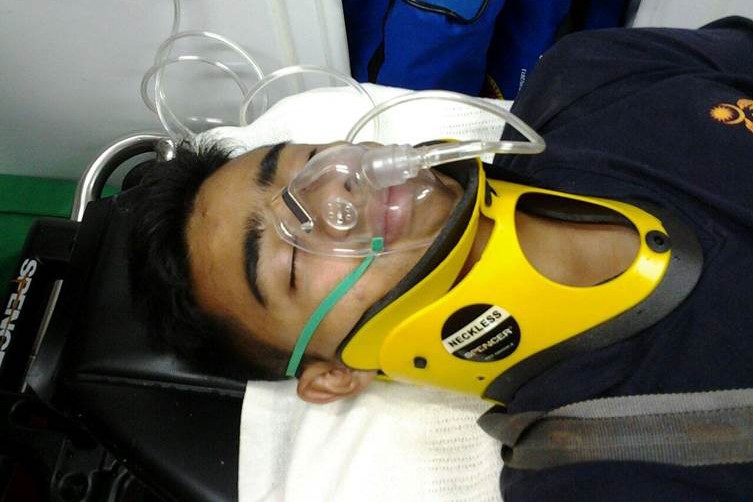
Cervical collar in trauma patients in emergency medicine: when to use it, why it is important
The term “cervical collar” (cervical collar or neck brace) is used in medicine to indicate a medical device that is worn to prevent movement of the patient’s cervical vertebrae when physical trauma to the head-neck-trunk axis is suspected or confirmed
Cervical collars of various types are used in three main situations
- in emergency medicine, especially if trauma to the cervical spine is strongly suspected;
- in orthopaedics/physiatrics during the treatment of numerous pathologies;
- in certain sports (e.g. motocross, to prevent damage to the spine in the event of an accident).
The objective of a neck brace is to prevent/limit cervical flexion, extension or rotation
In the case of first aid of patients who have been in a car accident, the collar is placed around the patient’s neck alone or together with the KED extrication device.
The collar must be worn AFTER the KED.
The ABC rule is more “important” than both the collar and the KED: in the event of a road accident with an accident victim in the vehicle, first of all the airway patency, breathing and circulation must be checked and only then can the collar and then the KED be put on the accident victim (unless the situation requires a rapid extraction, e.g. if there are no intense flames in the vehicle).
CERVICAL COLLARS AND IMMOBILIZATION AIDS? VISIT THE SPENCER BOOTH AT EMERGENCY EXPO
When to use the cervical collar
The device is used to avoid orthopaedic-neurological injuries, mainly to the spinal column and therefore the spinal cord.
Injuries in these areas can be very serious, irreversible (e.g. paralysis of all limbs) and even fatal.
Why the neck brace is important
The importance of protecting the cervical vertebrae derives from the possibility of death or permanent injury (paralysis) as a result of damage to the spinal cord.
FIRST AID TRAINING? VISIT THE DMC DINAS MEDICAL CONSULTANTS BOOTH AT EMERGENCY EXPO
Collar types
There are various types of cervical collars that are either more rigid and restrictive or softer and less restrictive.
The less restrictive, rather soft ones are usually used to ease the transition from a more rigid type to the total removal of the collar.
A rigid collar, for example the Nek lok, Miami J, Atlas or Patriot, or Daser’s Speedy collar is worn for 24 hours a day until the injury has healed.
The Halo type or SOMI (Sterno-Occipital Mandibular Immobilization) is used to keep the cervical vertebrae in axis with the rest of the spine and to immobilize the head, neck and sternum, usually after surgery and for cervical fractures.
Such collars are the most restrictive in terms of possible movement, rigid and uncomfortable of all types of devices for patient recovery.
RESCUERS’ RADIO IN THE WORLD? VISIT THE EMS RADIO BOOTH AT EMERGENCY EXPO
Contraindications in the use of the cervical collar
The use of cervical collars has contraindications and side effects that must be considered, especially if they are worn for a prolonged period of time.
A rigid collar on a patient with ankylosing spondylitis may cause paresthesia and quadriplegia in some cases.
In addition, rigid collars may increase cerebrospinal fluid pressure, reduce tidal volume and cause dysphagia.
The patient should remain under close observation.
Read Also:
Emergency Live Even More…Live: Download The New Free App Of Your Newspaper For IOS And Android
What Should Be In A Paediatric First Aid Kit
Does The Recovery Position In First Aid Actually Work?
Is Applying Or Removing A Cervical Collar Dangerous?
Cervical Collars : 1-Piece Or 2-Piece Device?


